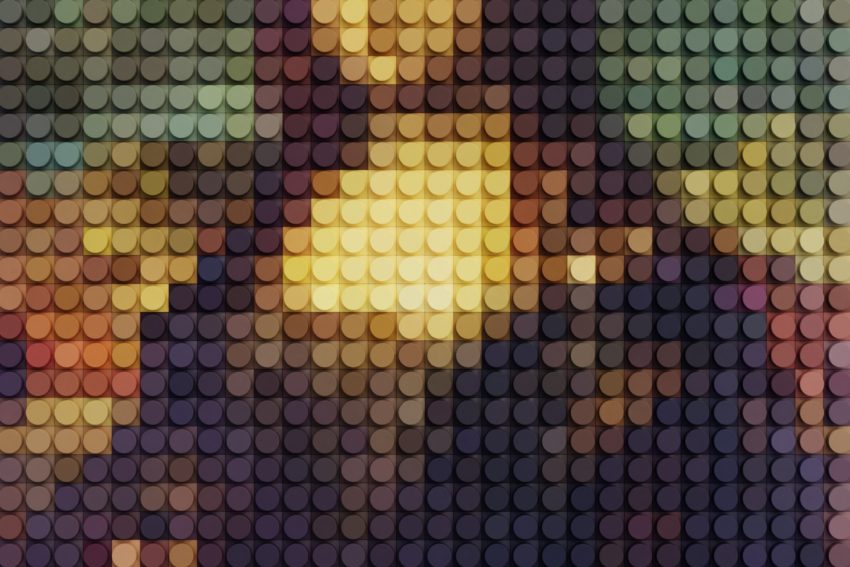
This blog is part of our series on facial recognition. Check out our first blog on this theme, by AboutFace PI Fay Bound Alberti, on facial recognition software, history, and the meanings of the face, and what we can learn about this technological innovation by looking at the past. Today’s blog is written by Sharrona Pearl, and explores the scale of human face recognition, from face blindness to super recognisers.
Facial Recognition: From Face Blindness to Super Recognisers
Face recognition is a wonderful and complicated neurological process. We are learning more about it every day. But it’s also a deeply cultural and social and emotional and human one. Faces are, as I’ve argued in my books and articles, a key part of how we make sense of others, build relationships, communicate, make judgements. Recognizing faces helps with interpreting emotion. It tells us something about where people are looking and what they might be looking at. All this gives us cues about how to interact with others and our surroundings. Recognizing faces can help us recognize social cues about how to act and what to do in a given situation, and with a given person. We spend quite some time on how we present our own faces, and we imagine we know all sorts of things about others based on their faces. The face is both a thing and a collection of things and feelings and ideas. It has a history and that history is changing. Face recognition, and the invention of the face recognition spectrum, is part of that history. The naming that emerged with these categories of “face blindness” and “super recognition” helped people understand something about themselves and how they make sense of others. They gave name to experience, and in so doing, created new kinds of experiences. This is true of all categories, but there is special resonance to the face. Because are faces are, or at least we think they are, who we are.
Face Recognition
A lot of things have to happen in the brain for us to recognize faces. It’s actually less extraordinary that some people can’t do it than that so many of us can. People, in general, are pretty good at recognizing faces; a face may often seem familiar even when we can’t remember names or context. For some people, it just doesn’t happen as well, and for others, it doesn’t happen at all. And it’s one of those things that seem to be impossible to understand how it works in others. As a person who recognises faces pretty well, face blindness just doesn’t make sense to me. There are all kinds of metaphors and explanations and attempts: imagine you were shown a picture with a pile of lego of different lengths and colours. Imagine the picture is then taken away. You would certainly know and recall that it contained lego, and maybe even some broad features of color and shape. But you are unlikely to remember precisely the order and configuration of each piece. That, maybe, is what face blindness is like: people can remember that they saw a face, with eyes and a nose and a mouth. But which eyes; what nose; whose mouth, disappears immediately the face is gone. Voices, to those with an ear or who have developed this adaptation, may offer consistent clues. Gait is often ingrained and can be linked to a particular person. Hairstyle and shape, distinctive piercings and moles and tattoos and glasses all contain lasting resonance. Face blind people rely heavily on such markers. But many of these markers can change, sometimes with no notice. That leaves face blind people without reliable ways of recognizing others; a change of hairstyle or clothing may mean that someone who was identifiable in the morning becomes impossible to distinguish in the afternoon, no matter how hard they look.

For about 1-2% of the population, no amount of staring at a face will help. No amount of training will help. Colour blind people cannot be taught to see colour. Face blind people cannot be trained to see faces. Profoundly face blind people simply will not recall the features of a face. Others can do it slightly better and so on and so on, with the bulk of the population mostly able to mostly recognize most faces. Relationships help. Repeated exposure helps. Paying attention – for most people – helps. Sharing a powerful moment helps. And, while memory and face recognition are broadly unrelated at the extremes, memory, taken in conjunction with everything else, helps. The top 1-2% of the population can do it better than anyone else. And everyone else can’t be trained to do that either. How odd it would be to condemn a colour blind person for not being able to distinguish red and blue. And how odd it would be to castigate someone for failing to recognize a face, or, indeed, for recognizing only some faces rather than essentially all of them.
Face Blindness and Super Recognition
When face blindness was first described, scientists thought that it was a pathology, a disability that some had to greater or lesser degree. And everyone else could just recognize faces more or less equally well. That changed pretty dramatically when Harvard post-doctoral fellow Richard Russell and his team clinically identified super recognition in 2009. If there is a bottom 1-2%, they theorized, there is likely a top 1-2%. Those are the supers. And while they aren’t perfect at face recognition, whatever that means, they perform at the top end of the scale compared to the rest of the tested world. Which means that it’s still a pretty big bucket, and that the top 1-2% of the top 1-2% are going to look significantly different than even other super recognizers. As I discuss throughout my forthcoming book, supers are extremely good at a wide variety of face recognition skills: matching images to people or other images; aging people over time; and recalling people in different contexts and identifying them as the same. While super recognizers do not have a photographic memory for faces, and they actually do sometimes forget a face, they do it much less than everyone else. Really, super recognizers recall faces independent of the depth of the interaction or relationship they have had with someone. Most of us recognize the faces of those we know and love better than anyone else. We are more likely to recall those with whom we have shared a powerful experiences. For supers, even a brief or fleeting or non-interaction with someone is often enough. That doesn’t mean they recognize all faces always: it does mean they recall most faces better than others. Even those they have encountered only briefly, and without meaningful exchanges or relationships.
Diagnosis or Explanation?
Facial recognition does not exist in a vacuum. We all recognize faces differently in different contexts and with different cues, even for those of us who can’t do it at all. In some ways, actually, it’s easier now to get by without recognizing faces, especially if you spend a lot of your time interaction with others online. (As I write this, we are two years into a global pandemic in which faces are often masked and maybe universally unrecognizable in public, and most encounters with others are on digital platforms that provide names below the faces. As most of the world got zoomed out, a small group of people quietly celebrated the ability to always know to whom they were talking. For face blind people, zoom was an unlooked for, unasked for gift that gave the elusive possibility of recognition.) Recognizing people has never been harder and never been easier. But also: there are a lot more faces now. And we encounter them a lot more both in person and through media.
We can know people don’t recognize faces from their testimony. But – and this is important – there are a lot of ways to be bad at recognizing faces. So: is face blindness a proscriptive term or a descriptive one? Is it a diagnosis or an explanation? The answer is, of course, yes: it is all these things. Faceblindness, or prosopagnosia, is a very specific term generated in a specific moment in history with specific reasons, narratives, and causes. It has to do with specific stuff in a specific part of the brain. And maybe some of those people in the past had that stuff in their brains, and maybe not. It’s interesting, of course, to speculate as to whether some of these case studies with associated recognition challenges were actually examples of face blindness. Many people have made precisely those speculations. Others refuse to.
I, as ever, say yes and.
Sharrona Pearl is Associate Professor of Medical Ethics and History at Drexel University. A historian and theorist of the face and body, Pearl has published widely on Victorian history of medicine, media and religion, and critical race, gender, and disability studies. Her current book, from which this material is drawn, is on the face recognition spectrum from face blindness to prosopagnosia and is forthcoming from Johns Hopkins University Press. This book is the third in her face trilogy, following Face/On: Face Transplants and the Ethics of the Other and About Faces: Physiognomy in Nineteenth-Century Britain. She is currently writing a book on “The Mask” under contract with Bloomsbury Academic. Pearl maintains an active freelance profile, with bylines in a variety of newspapers and magazines including The Washington Post, Lilith, and Real Life Magazine. Say hi on twitter @sharronapearl.
